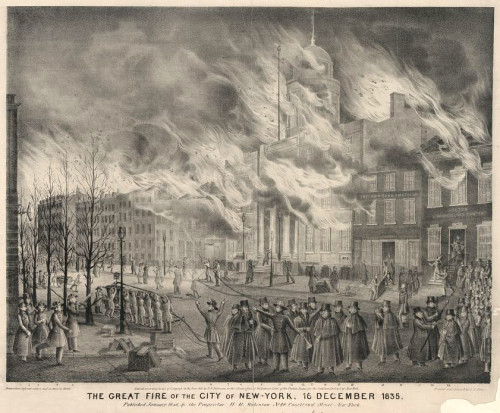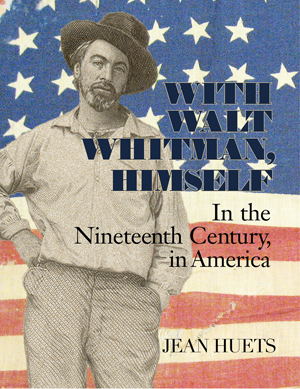
Publishing history crowns Manhattan as the enduring capital of the American publishing world, despite the many changes the internet has wrought. Before the twentieth century, when publishing moved uptown, printers and editorial offices concentrated in what is now considered the financial district.
Walt Whitman worked on and off in publishing for the 1830s through the 1850s. When he described one of his former employers as “the great Ann Street bamboozle,” he wasn’t referring to Ann Street as an address. Just as Madison Avenue means advertising, Ann Street meant publishing.
A few blocks south of City Hall and one of the oldest streets in Manhattan, Ann Street’s newspaper and book editorial offices included The New York Tribune, Harper & Brothers, The Evening Tattler, The New World, and The Evening Mirror.
Printing House Square was a short walk away. In Walt’s time, the Square was surrounded by buildings, including the headquarters of Tammany Hall, the powerful, Irish-dominated Democratic “machine,” and the Empire Club, a gang-driven political organization that eventually controlled Tammany Hall. Given the tendency of newspapers to be “party organs,” the proximity of publishing and politics is hardly surprising.
The Great Fire of 1835 followed by the Panic of 1837 devastated the publishing and financial sectors, but the 1840s saw recovery. What destroyed forever the profile of the old publishing district was the Brooklyn Bridge. The Bridge’s roadway thrusts into downtown, and the structure’s monumental scale rendered insignificant the comfortable buildings of old Manhattan.
WITH WALT WHITMAN, HIMSELF: IN THE NINETEENTH CENTURY, IN AMERICA | by Jean Huets
“A true Whitmanian feast—for the intellect as well as for the eyes.” — Ed Folsom, editor Walt Whitman Quarterly
Amazon | B&N | bookshop.org (supports indie booksellers)
signed copies, free shipping order from Circling Rivers
“A beautiful book of windows onto the life of Walt Whitman…. From the clear ringing prose to the fascinating photographs and colored illustrations of the great poet’s life we find the man anew—standing in his time and looking straight at us. [Huets] has made a book of marvels and I can’t put it down.” — Steve Scafidi, Poet Laureate, Virginia
Explore the fascinating roots of Whitman’s great work, Leaves of Grass: a family harrowed by alcoholism and mental illness; the bloody Civil War; burgeoning, brawling Manhattan and Brooklyn; literary allies and rivals; and his beloved America, racked by disunion even while racing westward. Over 300 color period images immerse the reader in the life and times of Walt Whitman.
Sources re Publishing: Geffen, Arthur. “Silence and Denial: Walt Whitman and the Brooklyn Bridge.” Walt Whitman Quarterly Review. Vol 1, no. 4 (1984). pp. 1–11. Kray, Elizabeth. “Walking Tour: Walt Whitman’s Printing House Square in New York City” poets.org. Great Fire of NY. Lithograph by Hoffy, printed by H.H. Robinson, New York. Library of Congress. Visualizing NYC.
